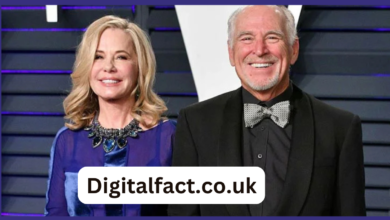Christie Smythe Story: How One Journalist Risked It All for Love

Christie Smythe, once a respected journalist at Bloomberg News, became the center of one of the most talked-about media controversies. Her journey from a dedicated financial crime reporter to someone who sacrificed her career for love left the world both shocked and intrigued. Smythe’s story is not just about her professional rise and fall; it is a tale of emotions, ethics, and the unpredictable turns life can take.
Her relationship with Martin Shkreli, the infamous “Pharma Bro,” turned into a viral sensation when she revealed that she had left everything behind for him. The revelation sparked intense debates about journalistic integrity, personal sacrifices, and the cost of love in a world driven by public perception. But beyond the headlines, who is Christie Smythe, and what led her down this path?
This article delves deep into her life, from her early career and groundbreaking reporting to her unexpected love story and its consequences. We’ll explore how the media shaped her narrative, the public’s reaction, and what lessons can be drawn from her experiences.
Who is Christie Smythe?
Before becoming widely known for her personal choices, Christie Smythe had built a solid reputation as a journalist. She pursued a career in investigative reporting with a strong passion for uncovering financial crimes and fraud cases. Her analytical skills and ability to break complex stories made her a valued professional in her field.
Born and raised with a keen interest in journalism, Smythe pursued her education with the goal of becoming a reporter. Her early work at Bloomberg was marked by deep investigative reporting, where she covered corporate fraud and high-profile financial cases. It was in this role that she first came across Martin Shkreli, a name that would later define a significant chapter of her life.
Despite her strong career trajectory, Christie Smythe decision to cross professional boundaries changed everything. Her journey from a respected journalist to a figure caught in the whirlwind of public opinion showcases the complexities of personal and professional choices. Her story highlights the dilemmas many professionals face—where does one draw the line between work and personal life?
The Martin Shkreli Connection
Martin Shkreli, a former pharmaceutical executive, gained widespread notoriety for increasing the price of the life-saving drug Daraprim by over 5,000%. This move earned him the nickname “Pharma Bro,” and he soon became one of the most hated figures in the corporate world. As a financial crime journalist, Christie Smythe was assigned to cover his trial, a task that would unknowingly alter her life forever.
What started as a professional assignment slowly turned personal. Smythe spent years covering Shkreli’s legal battles, visiting him in prison, and eventually developing an emotional bond with him. She described him as intelligent, misunderstood, and even charming—contrary to the public’s perception of him as a ruthless businessman.
The real shock came when she openly admitted to having fallen in love with him, leaving behind her marriage and career in the process. The revelation stunned the journalism community and the general public. How could an accomplished reporter become so deeply involved with the subject of her investigation? This question fueled debates on journalistic ethics, personal biases, and the power dynamics in media relationships.
Christie Smythe’s Career Fallout
The consequences of her relationship with Shkreli were swift and severe. Bloomberg, a publication that thrives on its journalistic credibility, could no longer align itself with a reporter who had compromised her objectivity. Smythe resigned from her position, effectively ending a career she had worked so hard to build.
The media was quick to dissect every aspect of her decision. Some viewed her as a cautionary tale, an example of how personal emotions can derail even the most promising careers. Others saw her as a woman who dared to follow her heart, despite knowing the risks involved. Either way, Smythe became a figure of controversy, with her story making headlines worldwide.
In interviews following her resignation, Smythe defended her choices, stating that her relationship with Shkreli was not a reckless decision but rather the result of a deep emotional connection. She also highlighted the pressures journalists face in maintaining absolute objectivity while covering intense and prolonged stories. While her career in traditional journalism may have suffered, her story forced the industry to reflect on its own ethical dilemmas.
Where is Christie Smythe Now?
After the dust settled, many were left wondering what happened to Christie Smythe. With her career at Bloomberg over and her relationship with Shkreli ultimately not working out, she had to rebuild her life. Instead of shying away from the public eye, she chose to use her experience as a lesson in resilience.
She has since moved on to writing freelance articles, exploring topics related to ethics, journalism, and personal experiences. Her story, though controversial, has also opened doors to discussions about how personal choices intersect with professional responsibilities.
Christie Smythe has expressed no regrets about her decisions, stating that life is about making choices and living with the consequences. Despite losing her job and the man she risked everything for, she remains determined to shape her own narrative rather than let the media define it for her.
Public and Media Perception
The public’s reaction to Christie Smythe story was mixed. Some saw her as a tragic figure who was misled by emotions, while others viewed her as someone who had taken control of her own destiny. The media, on the other hand, took a more critical stance, questioning her professional ethics and the implications of her actions on journalism as a whole.
Her story sparked conversations about gender dynamics in journalism, with some arguing that if a male reporter had done the same, the scrutiny might not have been as intense. Others believe that her actions blurred the line between personal involvement and professional responsibility, raising concerns about the credibility of investigative reporting.
Despite the backlash, Smythe has managed to maintain her composure, using her experience as an opportunity for self-reflection. She continues to engage in discussions about the role of journalists, media biases, and the impact of personal decisions on professional life.
Conclusion
Christie Smythe story is one that will be analyzed for years to come. It is a tale of ambition, love, sacrifice, and the unpredictability of human emotions. While her choices led to severe consequences, they also brought to light critical discussions about ethics in journalism, personal freedom, and media scrutiny.
Whether viewed as a cautionary tale or an example of personal empowerment, one thing is certain—Smythe’s journey has left a lasting impact on both the media industry and those who followed her story. In the end, her experience serves as a reminder that life is never as black and white as it seems, and sometimes, the hardest choices define who we truly are.




